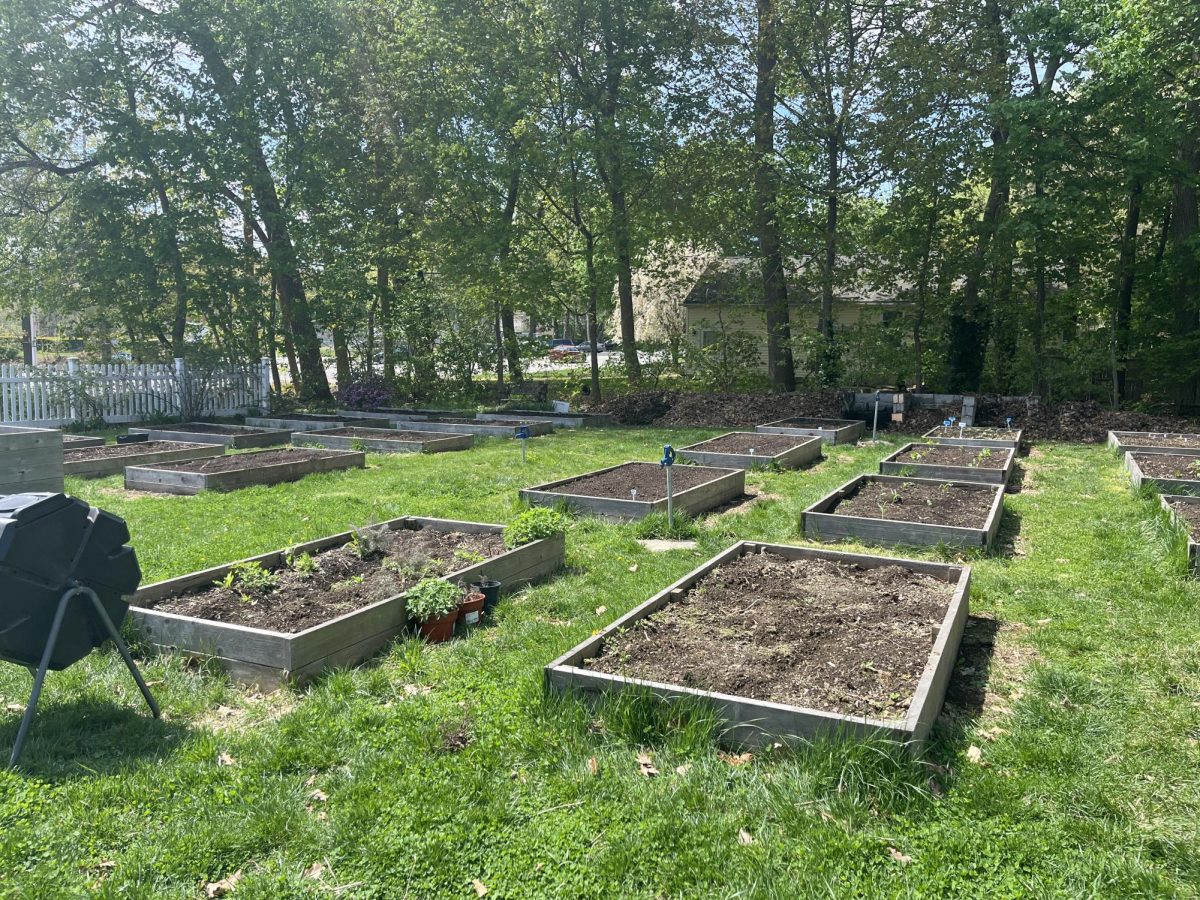
Jenna Foley
The Teaching Garden at Worcester State University
Calming, vibrant, and welcoming – the space is more than a patch of greens, it is a living outdoor classroom where education, community, and the importance of food systems come together to nurture plants and minds. Across the street from the Worcester State University campus, at 531 Chandler St., lies the WSU Teaching Garden.
The Urban Action Institute at WSU took control over the once-empty “eyesore” lot and turned it into a space where students of all ages, along with the outside community, can learn about the importance of food. “The Teaching Garden,” as stated in the garden’s mission statement, “teaches intergenerational groups about urban agriculture, nutrition and wellness, and food justice. It also functions as a place that nurtures and strengthens community relationships.”
The Urban Studies department, along with former UAI director Dr. Maureen Power, worked to clear the land and build on it over time. Dr. Power was tasked by President Maloney in 2012 to turn the space into a community garden. Everyone working together tested the soil to see if it was contaminated or safe to plant within the ground. Ultimately, they built 21 flower beds for planting by 2013, a hoop house that was built by 2021 to allow early planting inside a protected space, an outdoor washstand built from 2021-2022, and a shed that was donated to the garden in 2013. All of this combined allows the garden to flourish and produce numerous plants and vegetables.
The UAI works in the garden with the community outside of WSU, including the Worcester Dual Language Magnet School, the neighboring apartments, Bet Shalom, and the Regional Environmental Council. The people working in the garden send students from the Magnet school home with bags filled with produce, and they have done workshops and community volunteer days with the community partners. “It’s satisfying and heartwarming when a child picks a raspberry for the first time,” former garden manager Isabel Bartlett says, “and you can tell it’s one of the sweetest things they’ve ever tasted. Being able to connect young people with fresh produce was the most rewarding part of my job.”
Director of the UAI, Professor Adam Saltsman, was able to hire a new garden manager recently after about six months without one due to funding. Ideally, they would “have two positions, one’s a garden manager, one is a garden educator position. If we can hire both of them, they can work together to maintain the garden space and develop curriculum for students. If we don’t have funding for one or both, then at a minimum, the garden manager is overworked, stretched thin, trying to maintain the garden space and grow stuff, facilitating the learning of elementary and college students. If we have no funding for either position, then we find ourselves unable to properly take care of the garden space at all,” Professor Saltsman says, “and the risk there is that after only a couple of seasons it will become overgrown and abandoned.”
The WSU Teaching Garden has, over time, been working on branding and trying to make the garden’s presence known to more people around the campus. “A big challenge I dealt with,” says Bartlett, “was lack of visibility. Many people on campus don’t know this garden is here, which makes student involvement tricky. The Teaching Garden isn’t highlighted on campus tours, and many professors don’t even know it’s here.” There are many opportunities for students to get involved, whether it is by taking courses that work within the garden, which are open to everyone, no matter what your major or minor is, or simply walking by and taking a second to look around and appreciate the hard work being put into it.
The UAI has many plans for the future of the garden, including more seating to make an actual outdoor classroom in the back corner of the garden, putting more land under cultivation, and enlisting more community partners who will run programs with the garden. “Overall, I see the Teaching Garden becoming entirely self-sufficient,” Bartlett said, “meaning all plant waste becomes compost, and all vegetables grown are from seeds harvested from last season’s vegetables. Sustainability is the key here, and through dedicated work and community involvement, we can achieve it.”
“A garden brings people from all walks of life together…the garden needs people to tell its story: whatever that means to you,” Saltsman says.